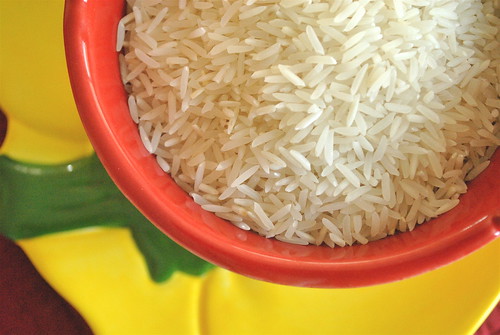July 2012
 |
Golden rice and white rice. Photo By International Rice Research Institute (IRRI) [CC-BY-2.0
(http://creativecommons.org/licenses/by/2.0)], via Wikimedia Commons |
Every so often, a little bit of new
science shines a spotlight on the danger of trying a simplistic, GM
quick-fix to address a complex problem.
Golden rice first hit the headline
decades go. The carrot-tinted rice is genetically transformed to
generate beta-carotene, which our bodies convert to vitamin A. It's
aimed at supplementing the diet of vitamin-A deficient populations in
developing countries whose staple diet is rice and little else.
Vitamin-A is critical to human vision,
bone and skin health, metabolism and immune function. It's involved
in the direct activation of several hundred genes. In the mammalian
embryo (including human), this global effect on genes renders the
vitamin essential for development, growth and tissue differentiation.
Chronic deficiency of vitamin-A can be catastrophic.
But, the golden rice has still not made
it out there. And, perhaps this is just as well, because
beta-carotene has, it seems, a dark side.





